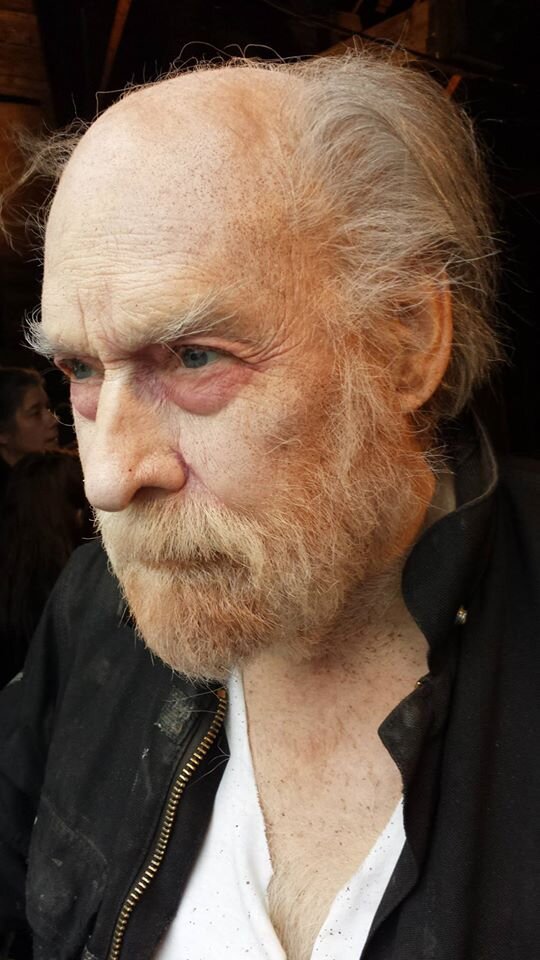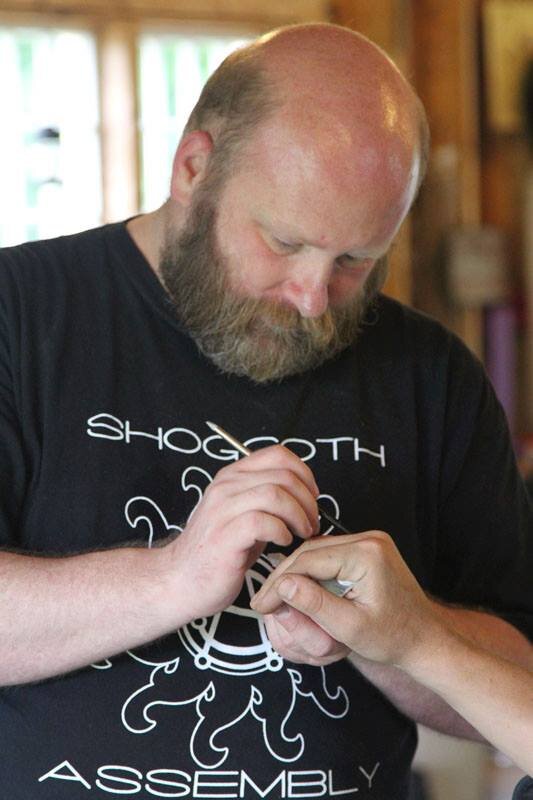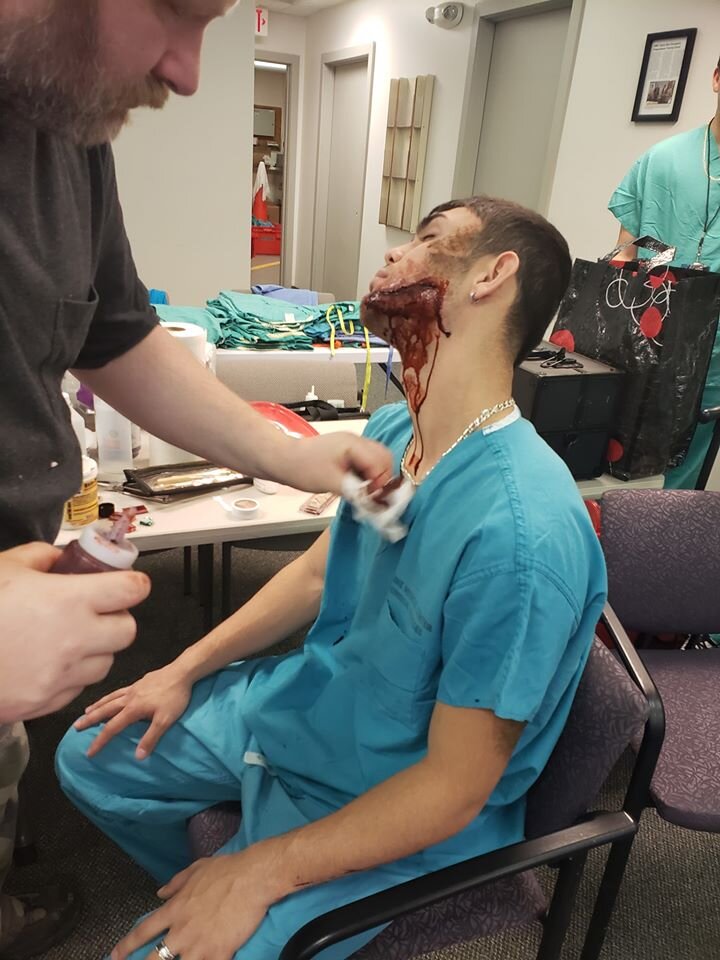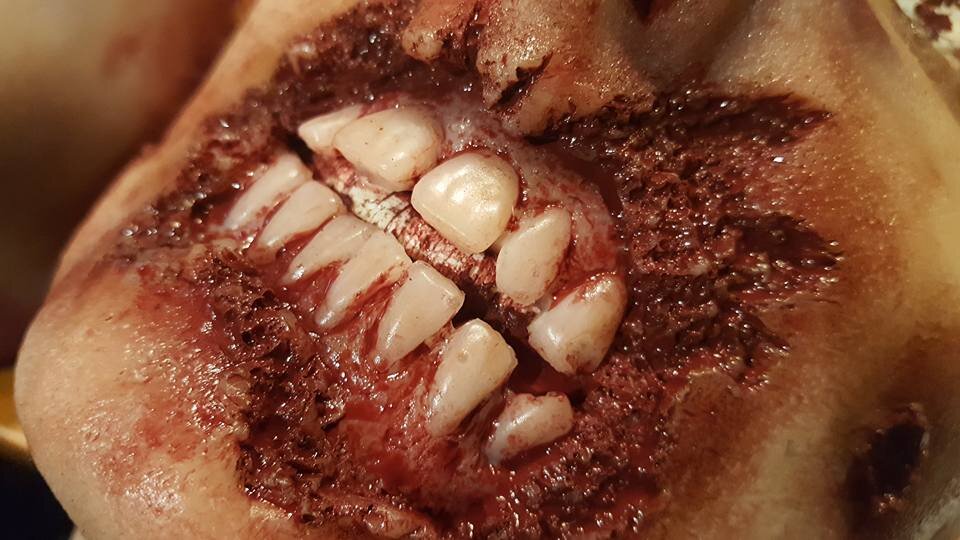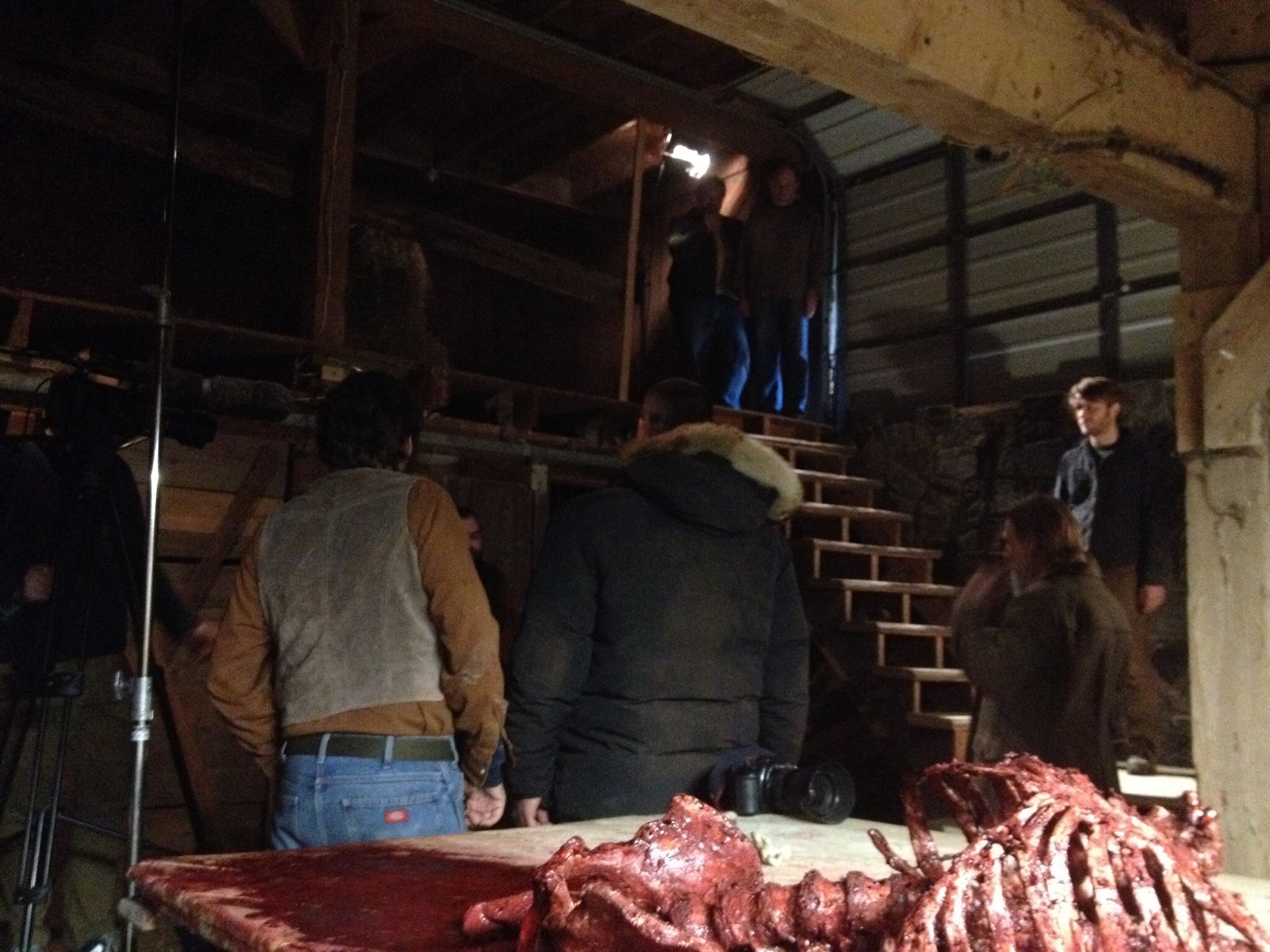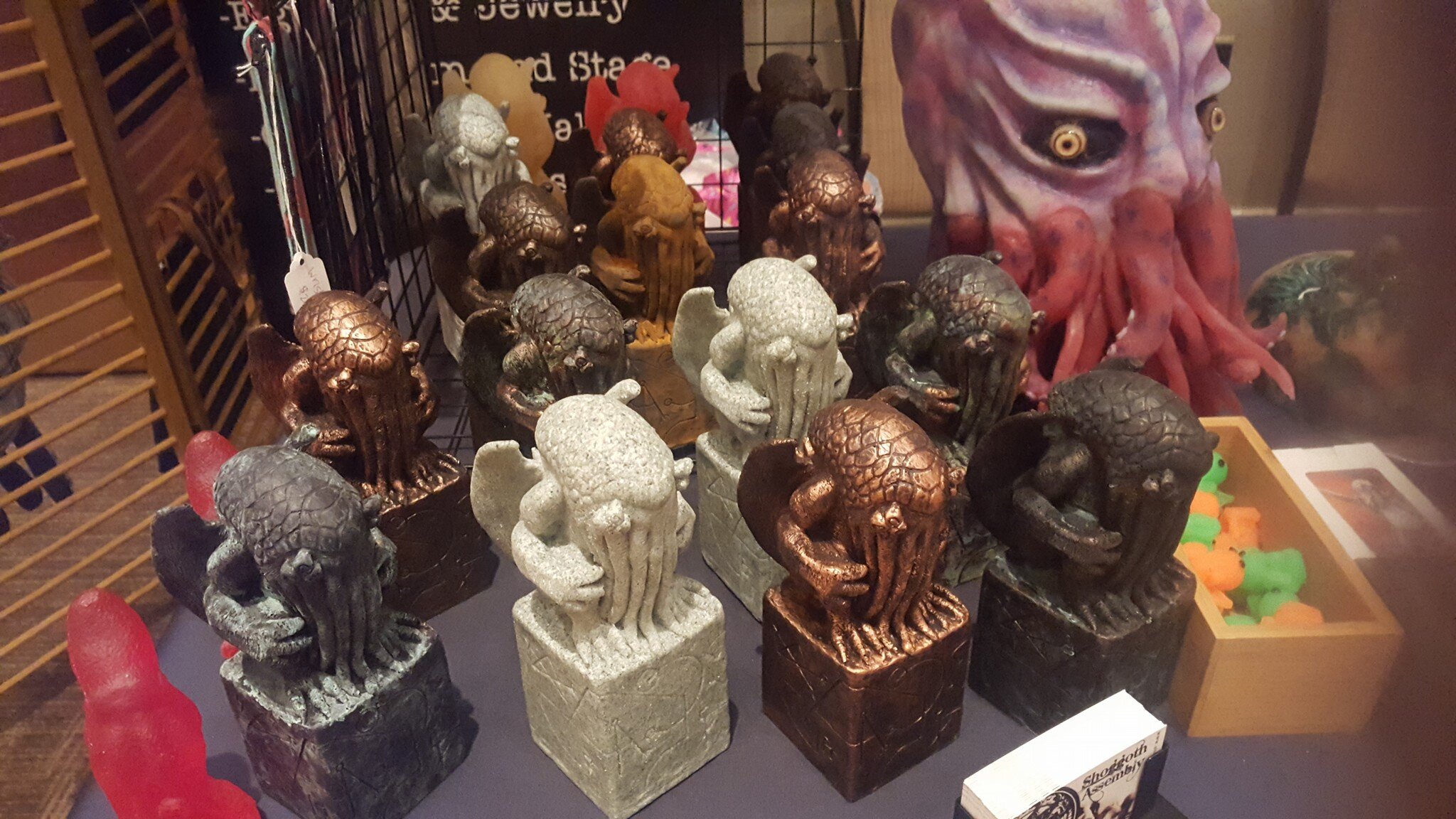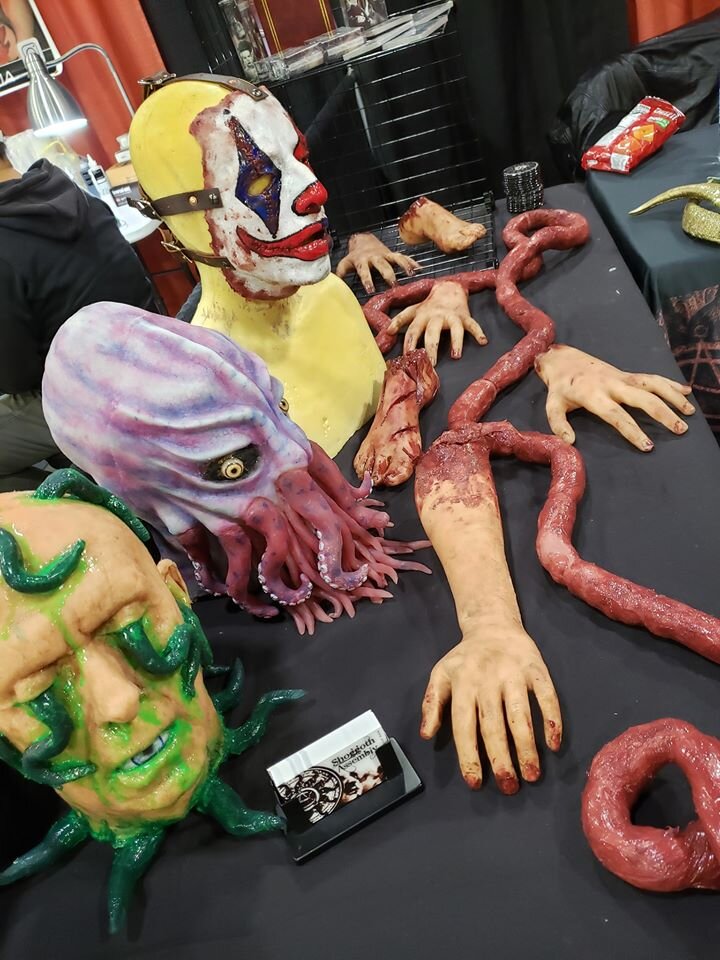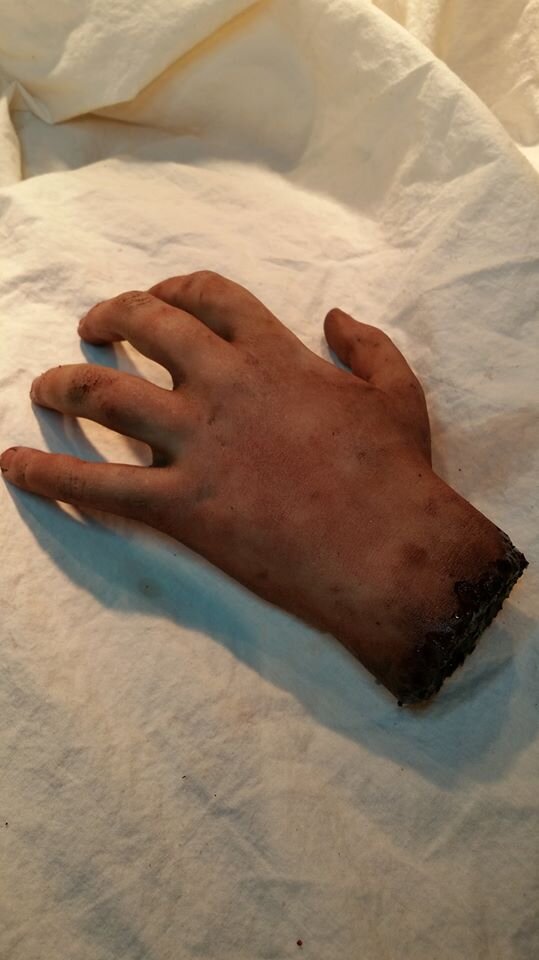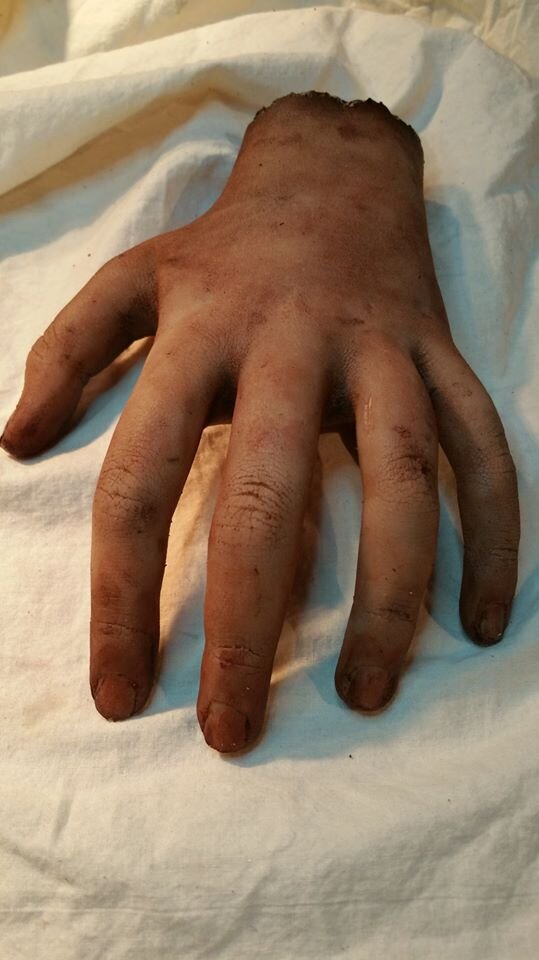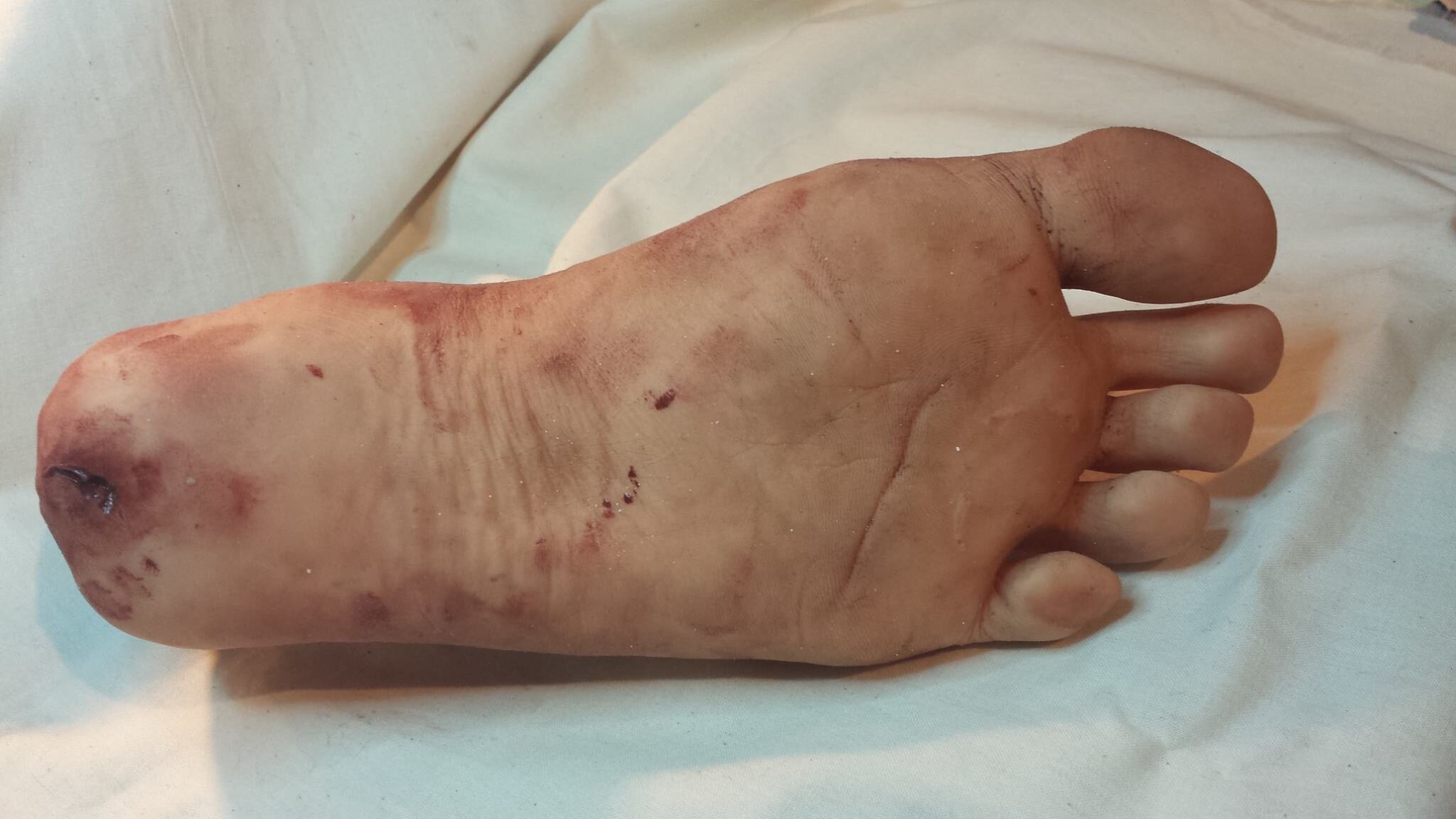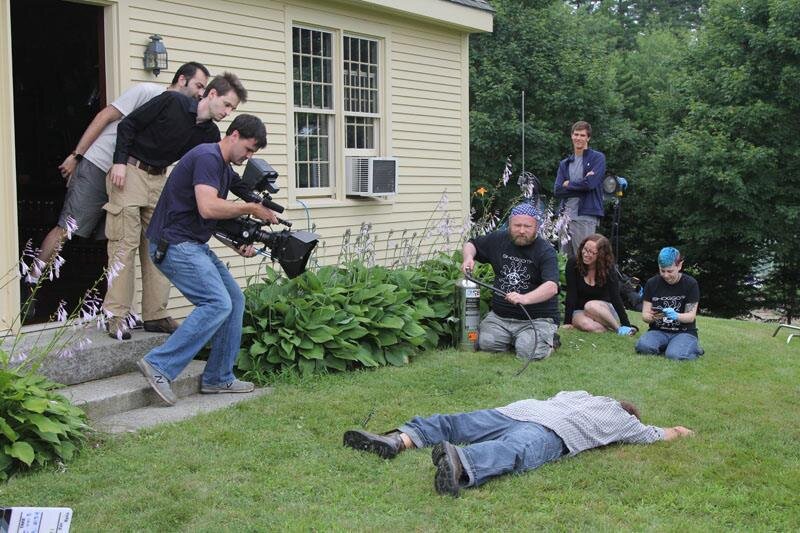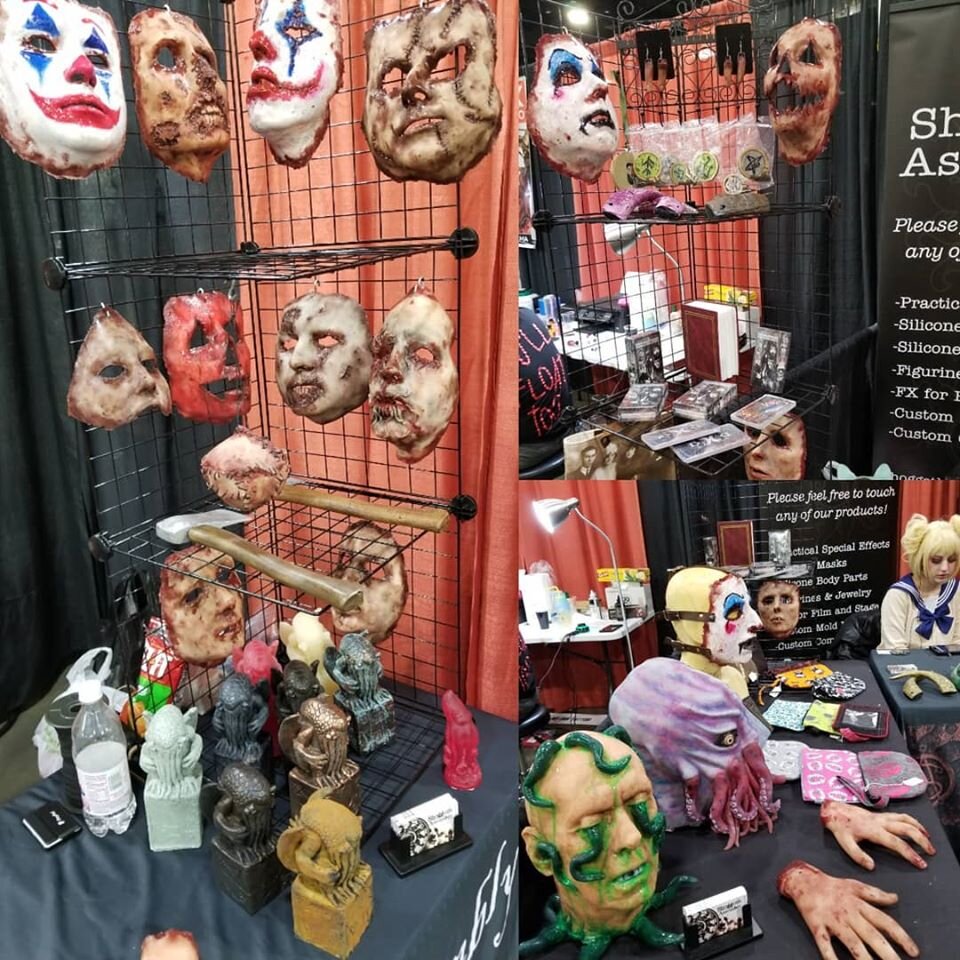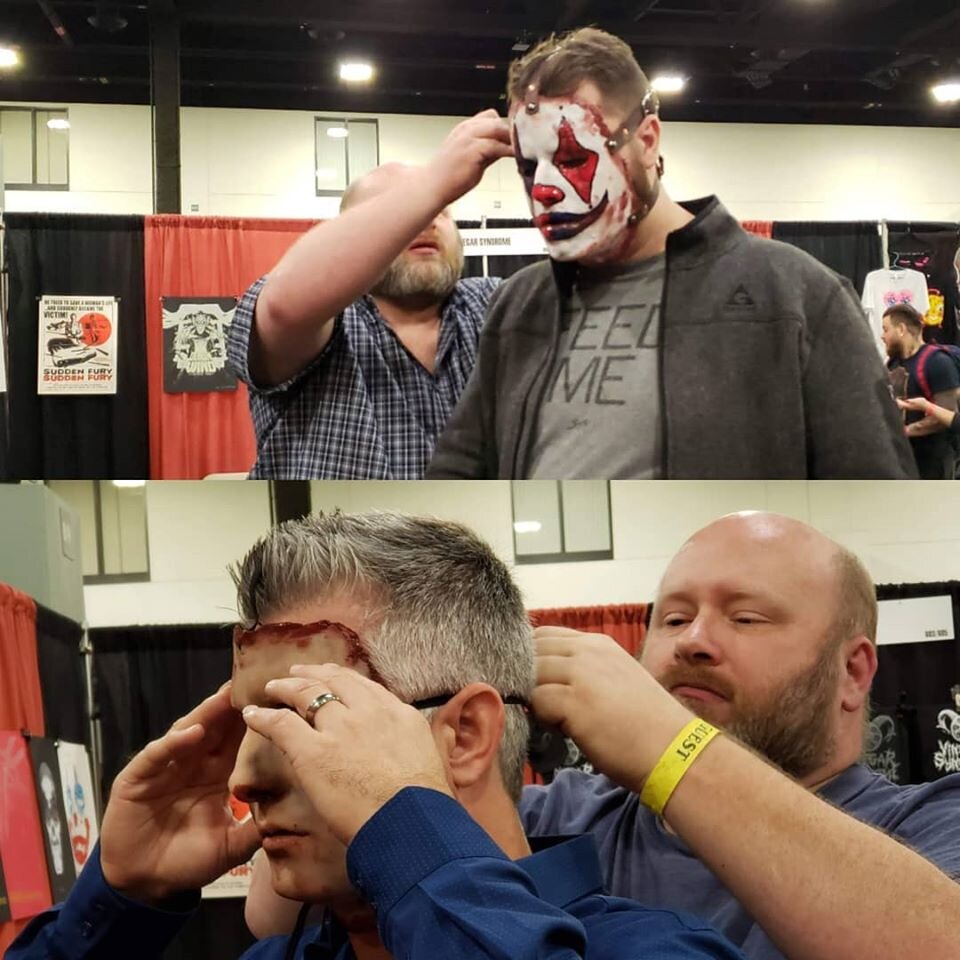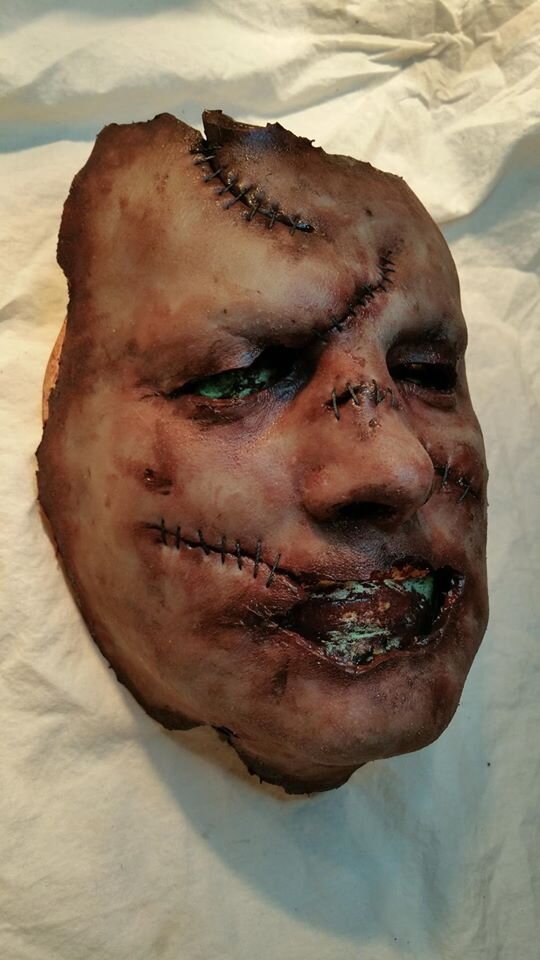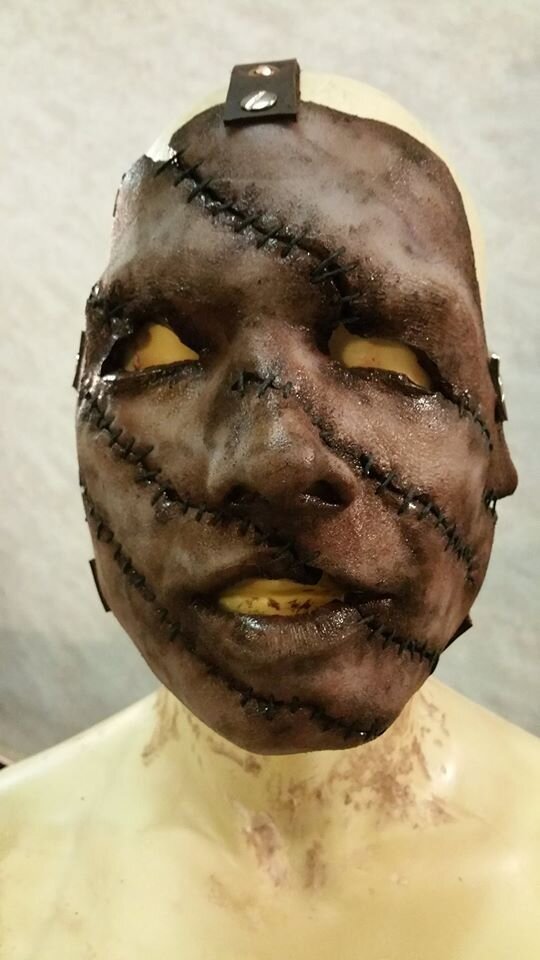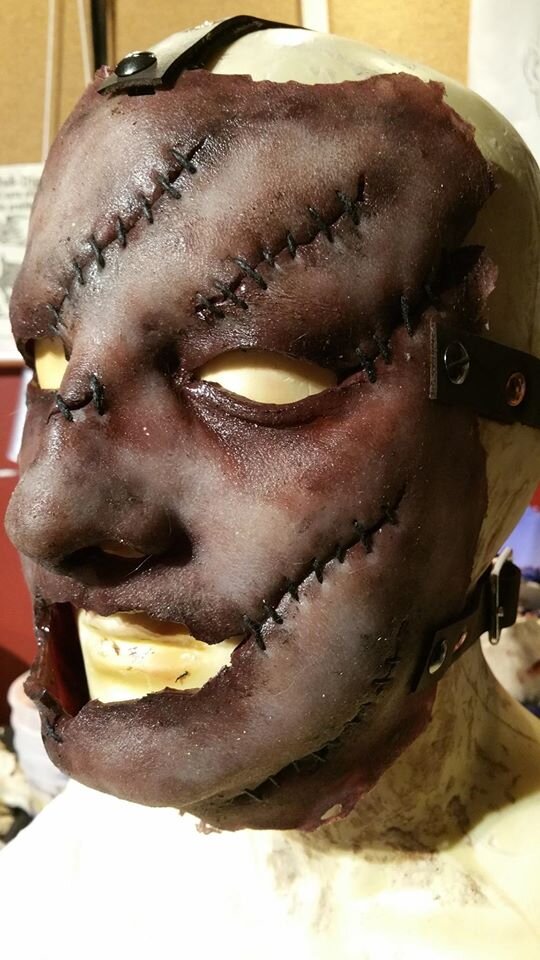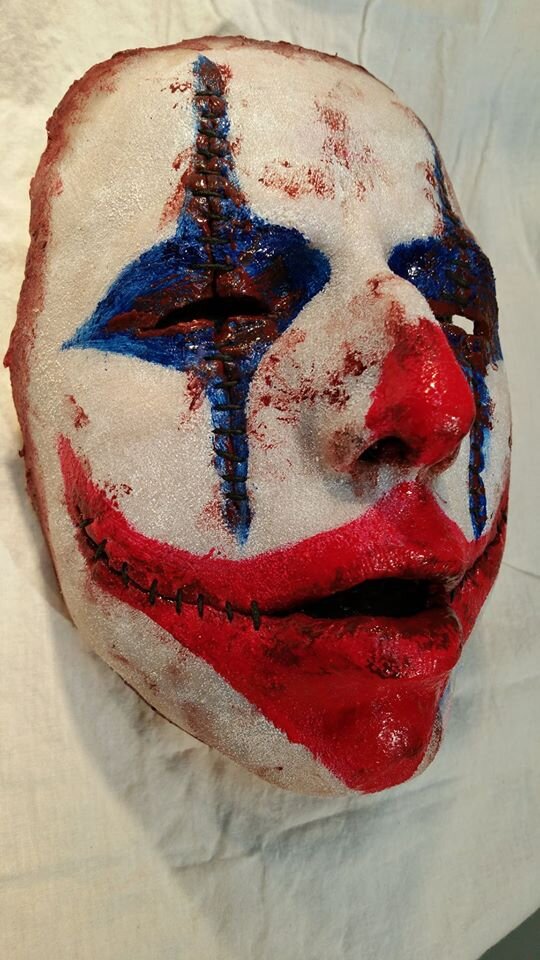13 Questions with Maine's Spookiest Special Effects Makeup Artist, Eric Anderson of The Shoggoth Assembly
Interview Conducted by Aesthel
“For our Makeup & Fashion issue we wanted to sit down and interview our favorite local special effects makeup artist! Check out Cosplay Realm’s exclusive interview with Eric Anderson, founder of The Shoggoth Assembly.”
CRM: Hello Eric! Could you please introduce yourself to the Cosplay Realm readers and tell them a bit about what you do?
Eric: Hi, I’m a Practical Special FX Artist, working in Makeup and Props and have a company called The Shoggoth Assembly that not only does SFX work for Film and Stage, but also sells silicone masks and other props to customers around the world.
CRM: Could you explain where the name “Shoggoth Assembly” came from?
Eric: This is a short version of a long answer, but a “Shoggoth” is a monster created by foundational horror author H.P. Lovecraft in the story “At the Mountains of Madness”. The creatures are described as huge amorphous masses with teeth, eyes, tendrils, arms and whatever else it needs to do its task growing from it and then quickly reabsorbing.
I pictured my company being something like this, as a loose collection of artists that come together and become whatever is needed for a project, turning into whatever horror is needed for the moment and then returning to our former selves afterward. In reality, it’s an excuse to use one of my favorite creatures in my company name in a way that starts conversations.
CRM: You’ve been working in special effects for a long time now. How did you develop this skill from a hobby into a business?
Eric: For years I had an interest in doing something “extra” for Halloween, and would construct things from paper mache, latex, or whatever crazy material I could use to get my crazy costumes together with. After an opportunity came that I was able to act in a low budget zombie movie, I got the filmmaking bug and decided to dive in and step up my game.
Never being the type to be afraid to dive right in, I relied a lot on the internet and was fortunate to meet a few people who had worked professionally in the SFX field who were able to guide me to the next level when I came to points where self teaching ran into roadblocks. Being one of the only people in my area to do this work, I was fortunate that I was able to work on a lot of projects that asked for very different effects. Because I love networking my friends into opportunities that can show off their talents, I created The Shoggoth Assembly to be a loose form where artists could come and go with us, working on projects as they came and the artists were needed. I started my internet business by looking for a way to fill time between my film projects which I could use some of the stuff I had already created to sell. I realized the silicone mask industry, which at the time was mainly selling very expensive full head masks, was underserved for selling simpler silicone face masks in a way that was affordable. From there, I started making masks out of the lifecasts I had already collected. I soon was gathering lifecasts of friends and actors just for the purpose of making masks.
CRM: The Shoggoth Assembly not only produces masks and props available to order, but also does makeup for film and theater. What are some of the biggest differences between these different levels of makeup?
Eric: For actors, I use anything from grease and creme based makeups up to more expensive alcohol based products. A lot of SFX makeup is all about blending in many layers and having a subtle hand. It’s often all about working magic to hide an edge of a prosthetic wound or scar, and unlike beauty makeup it’s usually about highlighting the parts that make you look older, more tired and worn down.
Film makeup tends to be more about seeking realism and portray realistic skin textures for HD cameras, whereas theater makeup tends to be bolder and needs to read well 30-50 feet away. I would tend to make a bloody wound much more over the top for a stage production than I would for film project.
Applying the “makeup” to a silicone mask has some similarities to applying to an actor’s skin, with the important difference that I am putting it on the mask in a way to be permanent, because in order to have the paint not rub or chip off the mask, I actually have to paint with silicone. Also, with silicone, the material is inherently translucent, so I start coloring a piece when I first start pouring it into a mold by pigmenting it knowing just how I’ll layer it to look like realistic skin when I am done with it.
CRM: You prefer to work mostly in silicone. What are some of the benefits of silicone above other makeup materials?
Eric: Silicone has many different grades available to it as far as hardness and flexibility are concerned. I can get silicone to be firm like a helmet or soft and gel-like, like a blister. Silicone can be made to mimic skin very well, and the fact that it is translucent means that you can layer the complexity of the skin colors to be much more realistic to the eye than you’d ever be able to get from latex which is opaque. Silicone is also heat resistant, so it won’t melt off your face like prosthetics made from gelatine.
It’s a more expensive material, and when you have a lot of it in something like a body suit it can get heavy, but I don’t like to work in any other material nowadays if I don’t have to.
CRM: Silicone can be expensive, both to work with and to purchase. You specifically price a lot of your items to be affordable despite this! What is some advice you would give to creators who are struggling to find the right price for their work?
Eric: This is a struggle for any creator. You need to balance out your Time and Material costs with how much of a profit you need to make on something to make you feel like you might want to go back and make it all again for someone else. Balance that all out and then hope it’s enough for what the market currently will bear. For instance, my wife makes beautiful hand made quilts and spends many hours on hand stitching and creating these beautiful pieces of art. The problem is, if she tries to sell them, there’s not a market out there for quilts that is willing to pay for 40+ hours that she invests into it. She has to price hers against other similar work out there and try to get a price that she can live with.
I guess I would say to figure out a price you can live with, that you’d be willing to pay for what you’re created and then see how the market reacts, and don’t be afraid to adjust as needed.
CRM: What have been some of your all time favorite creations you’ve made so far? Can you tell us about the process behind making them?
Eric: My first big mask was a octopoid-like full head mask filled with tentacles that I made a mold of for each little tentacle. I learned so much from that project, sculpting it all from clay from a sketch we had created of the creature, and then molding in silicone, attaching the dozens of tentacles and then painting it carefully. It took many hours but it ended up looking amazing up on stage!
I was also very proud of one project where I made like 15 “safety stairs” for a scene in a movie where non-stunt actors needed to be dragged down a stairwell and not get hurt. The trick was using just the right material that would look like realistic pieces of wood, were firm enough to not visibly compress when you walked on them, but were then soft enough not to hurt the actors when they were dragged face downward on them. The stairs worked out great and I spent many hours creating that effect for only about 10-15 seconds of film time. Such is the life of an FX artist.
CRM: Your masks and props can be seen all over the world from haunts to escape rooms to the screen. What are some cool ways that you’ve seen your props be used?
Eric: I had one woman use one of my severed hands nailed to a wall next to her door with curled fingers and acting as her key holder.
I had an organization use around 50 of my fingers and put them in an off-color solution in little glass vials and then mail them out for invitations to a gala taking place at a museum for medical oddities.
CRM: Because of the type of work you produce, you are one creator who has felt the effects of the tightening of Etsy’s guidelines. How have stricter rules like this affected you?
Eric: When you try to make a product that’s affordable, you are willing to not take in big margins of profit. Every little percentage added as a fee to skim off the top of one of my orders reduces it even more. Add to that where Etsy doesn’t want to promote my listings because they aren’t family friendly… it’s certainly enough to make you look elsewhere.
I was very opposed to one of the more recent strong arm tactics that Etsy did over the holidays. They started pushing a new policy of “encouraging” all merchandise over $35 to be “free shipping”. Nothing is ever free shipping, especially if you expect there to be tracking and insurance on your packages. So, Etsy announced that people liked Amazon Prime shipping so much that they expected it with Etsy, and that any products not including free shipping would henceforth be moved to the bottom of any search lists that might normally list their product. So, basically, if you didn’t comply you would be preempted in searches by all of your competitors on Etsy. Instead, they wanted you to work the cost of shipping into the cost of the item. While this might seem like the same thing, consider that I could sell 3 masks and have them ship in the same box. Instead, those 3 masks now all cost you extra. This was one of the reasons that I opened up my “Main” site on shopify at http://shoggothassembly.com
CRM: You have been known to take in creators and teach others your makeup skills through independant classes, convention panels, and apprenticeship programs. What is it that you love about teaching others these skills?
Eric: I love helping people realize a vision that they have, and I love people taking the skills I helped them learn and produce things I would have never thought of. None of us made this stuff up in a void, we’re all standing on the shoulders of giants - of those that came before us and who influenced our work. I love the idea that teaching makes you immortal as the skill gets passed down from one person to another and it evolves and enhances the world.
CRM: The Shoggoth Assembly has tabled selling at many conventions too! What are some of the best parts about traveling to conventions like this? How have people reacted to seeing your props in person?
Eric: A lot of the masks and props that I make might look realistic, but the brain really enjoys the realistic feel of all of the masks and props as well. I love meeting people who touch a severed ear and get an all-body shudder but can’t stop feeling other parts. I love people seeing my products and having an inspiration for pranks or haunts or of anything else.
You don’t get all that from just pictures. The touch and feel really brings it home for people.
CRM: Although you have “leatherface” options for your masks, you actually don’t like making exact replicas with your props. Instead these “leatherface” masks are more unique takes on the concept. What is it that you like about making more original work?
Eric: In the horror world there are a lot of artists who make replicas of various things (Jason and Freddy masks, etc…) and I don’t have a problem with that. It just doesn’t interest me to make exact copies of other artist’s work. I would rather take the inspiration of someone’s work and do my own thing with it. Then I can feel like it’s mostly mine.
CRM: Thanks for taking the time to answer our questions! Is there anything else that you would like to add? Please let everyone know where they can find more of your work online!
Eric: I am not always good at posting pics and updates, but when I do they tend to be on my Facebook and Instagram pages. If you are looking to order something, the best place to look would be my shopify site at http://shoggothassembly.com. Thanks for the great questions and for including me in your great magazine!


